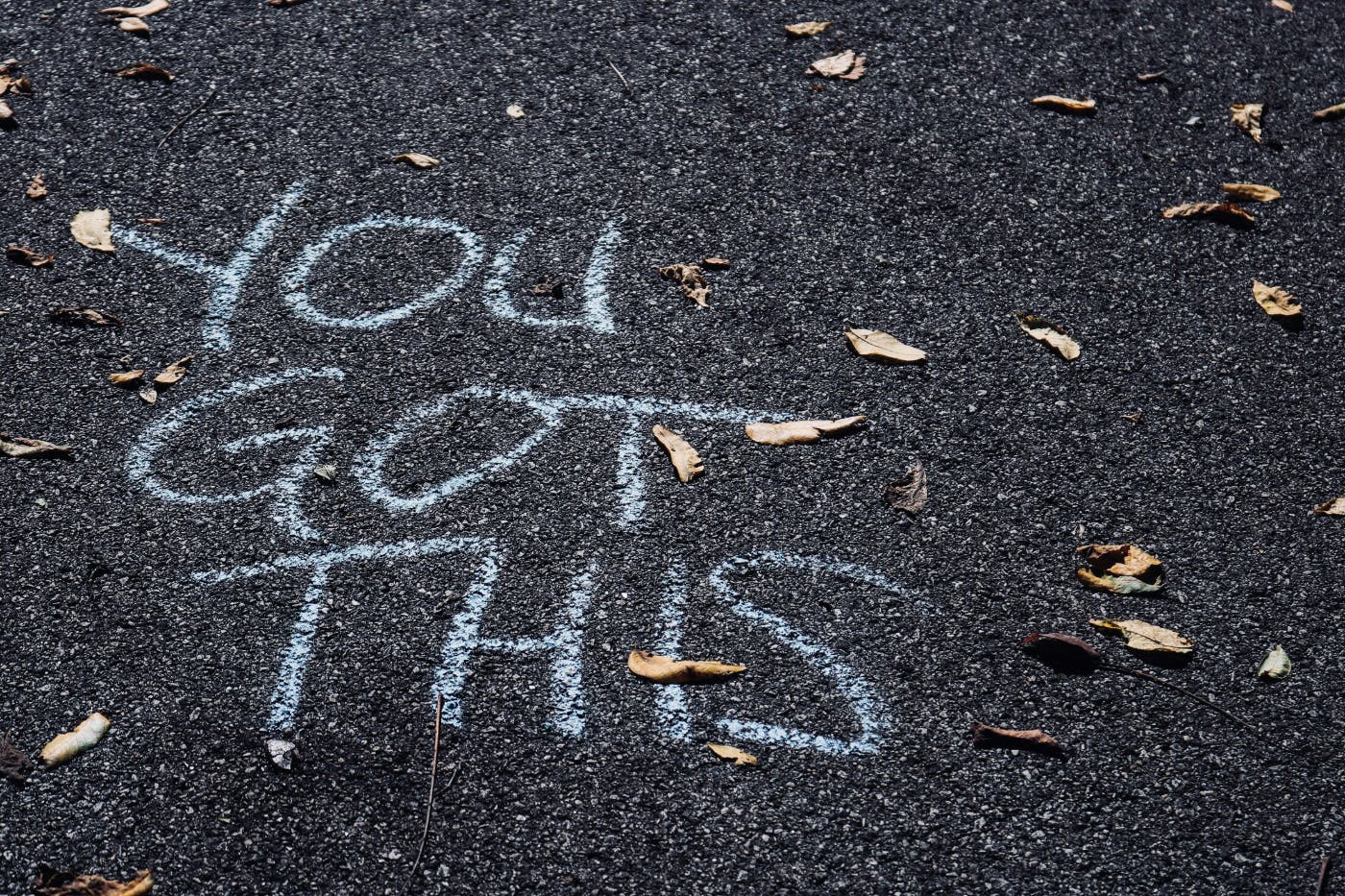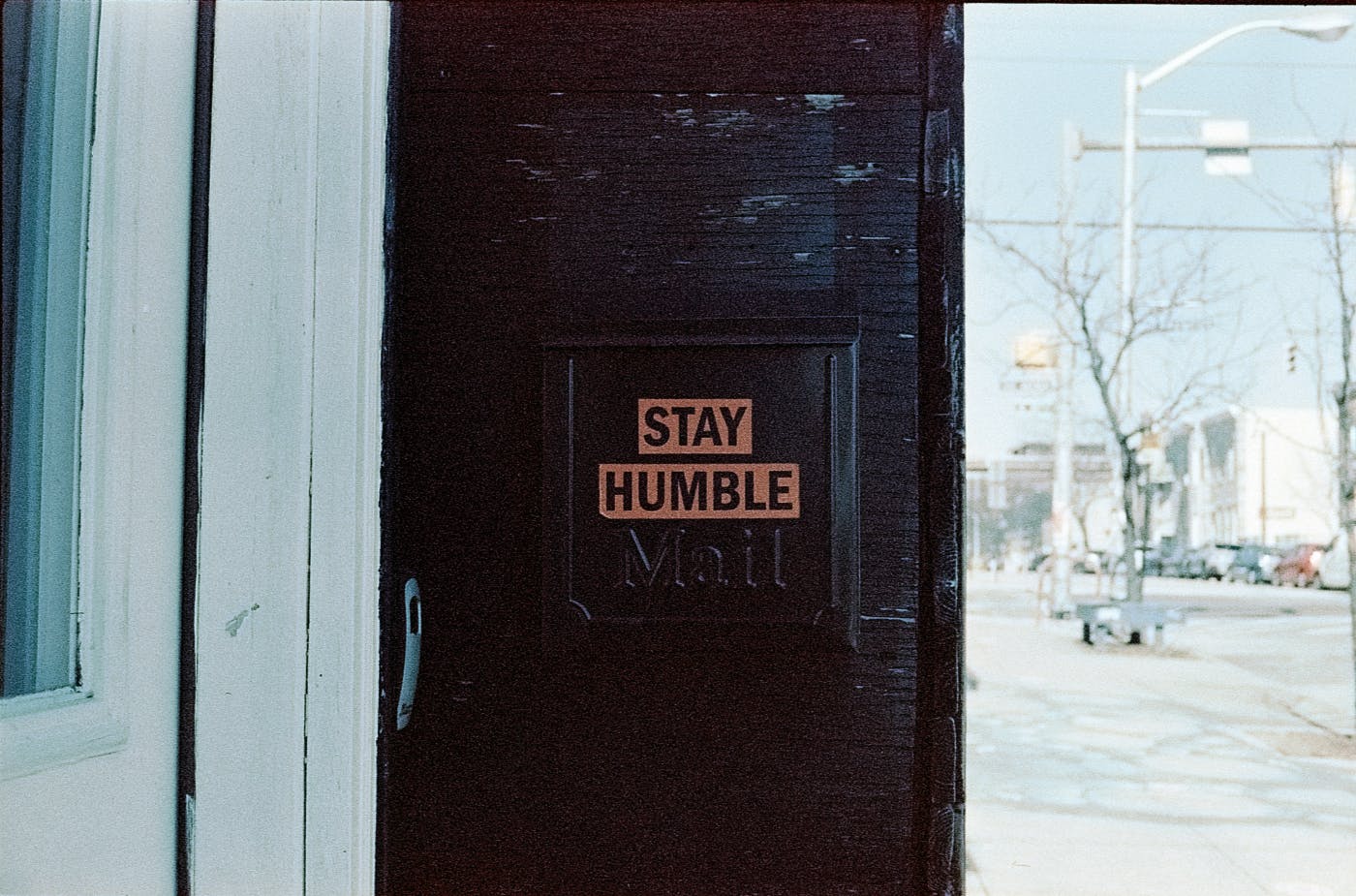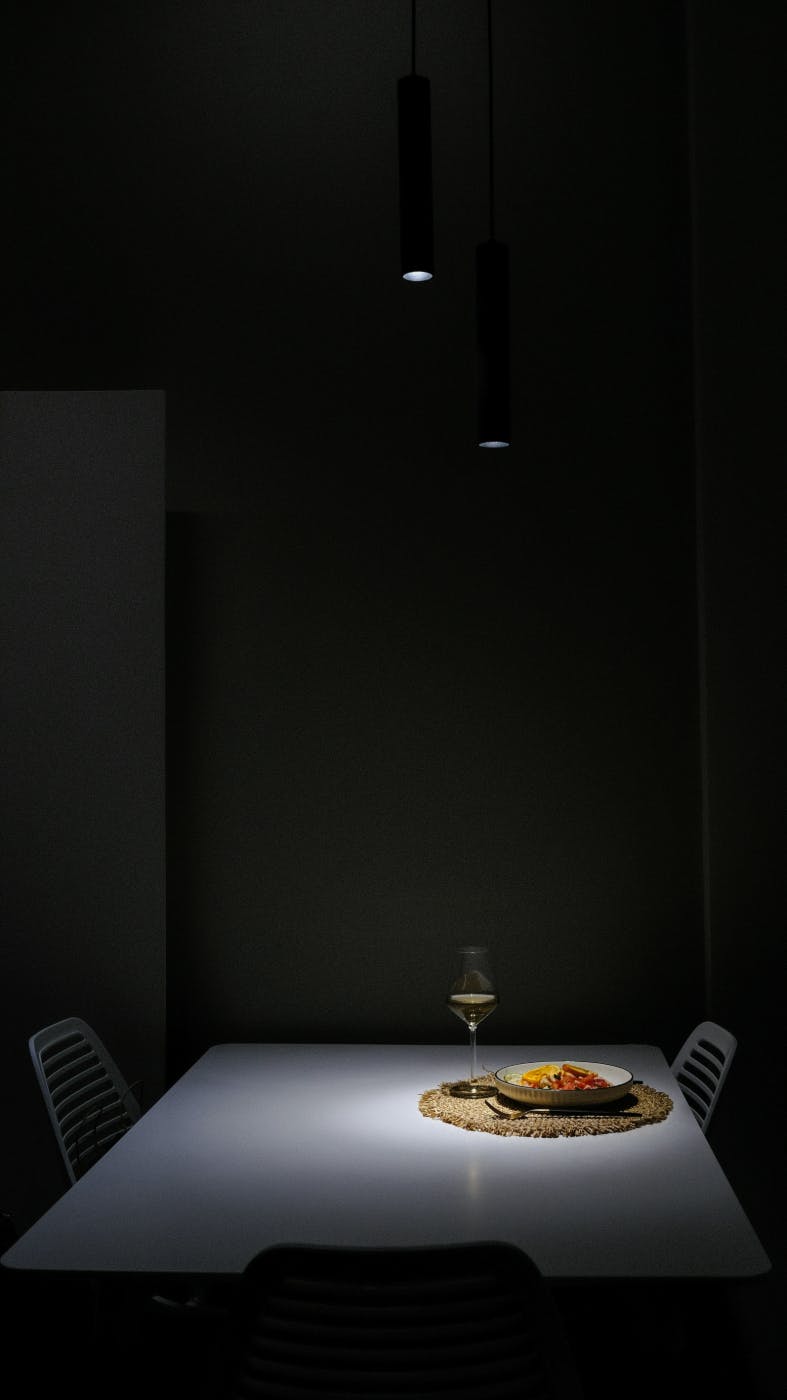
As a person, I’ve let hubris trip me up more than once. But what about brands? Can companies fall into the same trap?
Many years ago, when I was starting out as an actor, I had a moment that’s kind of frozen in amber for me—a moment of great excitement that ended in soul-crushing defeat. And honestly, I can lay the blame squarely on one thing: the amount of hubris I brought into the situation.
I was in grad school, getting some attention from local theaters, and feeling pretty good about myself. That summer, I was in upstate New York working at a Renaissance fair, doing a lot of improv and street performances. One day, a woman approached me after the fair, said she was with talent acquisition at ABC, and wanted to bring me in for an audition. After confirming she was legit, I called her back and arranged to meet the talent folks in New York City.
Now, I was cocky—full of piss and vinegar—and I’d been doing improv almost every day for a solid year. I thought I was sharp. No, I knew I was sharp.
I walked into the audition room, and they handed me sides to read. I ignored the script and improvised like crazy. After the first read, they told me I was funny—but they wanted me to stick to the script so they could see me working the character. I have no idea what was going on in my head, but instead of listening, I doubled down. I improvised again, barely touching the script. I floated above the words, convinced I was funnier than any writer could be, delivering a grand aria of unscripted brilliance.
When I finished, I stood there smiling, already spending my first superstar paycheck.
The head guy said, “Well, that was…” and trailed off. He was not pleased. His assistant stood, took my arm, and walked me out. Outside, she glanced at me—probably seeing the confusion on my face—and said:<br /> “Look, you’re funny. So is almost everyone who walks through that door. But he asked for something specific, and you just showed him you can’t—or won’t—take direction. You think you know better than everyone. To a guy like Andrew, that means you’re difficult. And difficult costs money and time.”
Then she shrugged and walked away, leaving me gutted but with a lesson that would stick:
Hubris—no matter the form—is ugly, and it will cost you.
As a person, I’ve let hubris trip me up more than once. But what about brands? Can companies fall into the same trap? If so, what happens when they do? And more importantly, how can they avoid it?
Let’s find out.

The Nature of Brand Hubris
In Greek tragedies, hubris is more than simple arrogance—it’s a kind of fatal blindness. The hero believes they’re untouchable, that the rules don’t apply to them, that they know better than anyone else. And in the business world, brands are just as capable of catching this disease.
Brand hubris isn’t just one overconfident marketing campaign or a smug CEO soundbite—it’s when that overconfidence becomes baked into the company’s DNA. It’s cultural. It’s institutional. Everyone inside starts believing the brand’s own hype, and pretty soon, they stop seeing the cracks forming in the foundation.
You can usually spot it in three key behaviors:
- They stop listening to customers.<br />Feedback becomes an inconvenience, not an opportunity. Any criticism is dismissed as ignorance or fringe opinion.<br />
- They mistake size for invincibility.<br />Market share and brand recognition are treated like shields against competition—because “we’re too big to fail” is apparently a business strategy now.<br />
- They believe past wins guarantee future ones.<br />Success turns into a crutch. “We’ve always done it this way” replaces “What’s changing and how do we adapt?”
The danger is, hubris feels good at first. Just like in my audition, it can feel like confidence. The difference? Confidence keeps you alert and adaptable. Hubris puts you on autopilot and convinces you you’re flying when you’re actually falling.
And the fall is coming.
The Cautionary Tales
Hubris doesn’t just live in ancient plays or the memory of one overconfident actor—it’s written all over the history of business. And unlike in fiction, where the hero’s downfall makes for a tidy third act, in the real world, it costs jobs, erodes trust, and sometimes kills a brand entirely.
Let’s pour a tall glass of schadenfreude and look at a few classics.
Blockbuster vs. Netflix
Once upon a time, Blockbuster was the undisputed king of Friday night. Their stores were everywhere. Their late fees were legendary. They were so dominant, they laughed Netflix out of the room when the upstart offered to partner with them in 2000.
Netflix wanted to handle Blockbuster’s online rentals while Blockbuster focused on brick-and-mortar. The idea? Mutual survival in a changing market. Blockbuster’s response? Essentially, “Cute. Now run along.”
The arrogance wasn’t just in turning down the deal—it was in the belief that the model that made them kings would keep them kings. They doubled down on physical stores while Netflix doubled down on streaming. We all know how that story ended: one company is now synonymous with home entertainment, and the other is a trivia question.
New Coke: When Change Is a Slap in the Face
In 1985, Coca-Cola decided to reformulate its flagship drink to better compete with Pepsi. In blind taste tests, New Coke beat the old formula. On paper, it looked like a slam dunk.
What they didn’t factor in was the emotional connection people had to the original Coke. The brand underestimated just how deeply it lived in people’s nostalgia, identity, and rituals.
When the new formula rolled out, loyal customers didn’t just dislike it—they saw it as a betrayal. Protests, letter-writing campaigns, and public backlash forced Coca-Cola to bring back the original recipe after just 79 days.
The lesson? Winning a taste test doesn’t mean you’ve won hearts. Ignore that, and you’re not innovating—you’re alienating.
Quibi: The $1.75 Billion Blink-and-You-Missed-It
In 2020, Quibi launched as a streaming platform designed for “quick bites” of video—perfect for mobile viewing. It had billions in funding, Hollywood A-listers, and industry veterans at the helm.
What it didn’t have was humility. The leadership ignored clear signs that the market was already saturated, that mobile-first video had free competitors (hello, YouTube and TikTok), and that people didn’t want to pay for something they could already get elsewhere.
They also refused to pivot when early results were bad, believing their “superior” content and business model would eventually win people over. Instead, Quibi lasted all of six months before shutting down—a cautionary tale in burning through both money and goodwill.
The Pattern
Different industries, different decades, same blind spot:
- Overconfidence in past success.<br />
- Ignoring or dismissing market signals.<br />
- Assuming they know better than their customers.<br />
It’s easy to point and laugh from a distance, but hubris doesn’t happen because leaders want to fail. It happens because success can be intoxicating, and once you’re drunk on it, you stop noticing how wobbly your footing has become.

Why Success Breeds Blindness
Nobody wakes up one morning and says, “You know what? Let’s tank this perfectly good brand.” Hubris creeps in quietly. And the biggest doorway it walks through? Success.
When things are going well—sales are up, the press is glowing, the competition seems miles behind—it’s easy to believe you’ve cracked the code once and for all. That you’ve found the golden formula no one else can touch. And that’s precisely when your vision starts to narrow.
The Success → Confidence → Complacency Loop
- Success feels amazing. It validates your ideas, your processes, your leadership.<br />
- Confidence grows—healthy at first, even necessary.<br />
- Complacency sneaks in. Why question what’s working? Why fix what isn’t broken?<br />
- Blindness sets in. Warning signs get downplayed, data gets cherry-picked, and dissenting opinions are treated like disloyalty.<br />
By the time reality knocks, you’re so deep in the bubble you can’t hear it over the sound of your own applause.
<br />The Echo Chamber Effect
Inside a successful brand, hubris doesn’t live in one person’s head—it gets baked into the culture.
- Leaders hire and promote people who agree with them.<br />
- Teams learn that questioning leadership is risky.<br />
- Outside perspectives are seen as “not getting it.”<br />
The result? Everyone is reading from the same script, and nobody notices when the plot has holes.
Confirmation Bias in Action
Psychologically, we all like being right. But in a brand riding high, that bias can go into overdrive. Leaders selectively pay attention to evidence that proves their genius and filter out anything that might challenge it.
It’s the corporate version of holding your hands over your ears and saying “la-la-la, I can’t hear you” to market reality.
Why This Matters More Than Ever
Today’s markets move fast. Competitors emerge from nowhere. Consumer preferences shift overnight. Technology rewrites the rules quarterly.
In that kind of environment, hubris isn’t just a flaw—it’s a liability. And it doesn’t matter how many trophies are in your case; if you can’t adapt, you’re setting yourself up for a very public tumble.

The Fine Line Between Confidence and Arrogance
Confidence is the lifeblood of any successful brand. Without it, you can’t launch bold campaigns, stake a claim in a crowded market, or lead your customers somewhere new.
But arrogance? That’s the counterfeit version. It looks a lot like confidence from the outside, but it’s hollow—and it almost always ends up costing more than it earns.
Confidence vs. Arrogance in the Wild
Confidence
- Listens actively to customers and adapts based on feedback.
- Sees competitors as motivators and benchmarks.
- Makes decisions informed by data and insight.
- Welcomes diverse opinions internally.
- Knows success is temporary without continued effort.
Arrogance
- Assumes customers will follow no matter what.
- Sees competitors as irrelevant or inferior.
- Makes decisions based on ego and gut alone.
- Punishes dissent and rewards agreement.
- Believes success is permanent and self-sustaining.
The Subtle Shift
Here’s the tricky part: brands rarely flip overnight from confident to arrogant. It happens in small steps. A win leads to cutting a few corners. A strong quarter justifies ignoring a bad review. A glowing media profile makes leadership stop listening as closely.
Bit by bit, the muscle memory of staying humble and hungry starts to atrophy.
Spotting the Red Flags
Ask yourself—and your leadership team—these questions:
- When’s the last time we changed a plan because of customer feedback?<br />
- Do we see market disruptors as a threat or a joke?<br />
- Have we said “We’ve always done it this way” in the last month?<br />
- Are our biggest ideas tested in the real world, or just blessed in the boardroom?<br />
If you don’t like the answers, you might be edging from confidence into arrogance without realizing it.
And here’s the good news: that line can be walked back from—if you catch it in time. Which brings us to the final act: how to stay humble without losing your swagger.

Staying Humble Without Losing Swagger
Humility and swagger aren’t opposites—they’re a balancing act. The most successful brands carry themselves with quiet confidence, but they never forget that the market, the customer, and the culture hold the final say.
Here’s how to keep your brand’s boots on the ground without losing the strut:
1. Build in “Challenge Sessions”
Make it a habit for teams to poke holes in your own ideas. Rotate in people from outside the immediate project or department to stress-test the plan. The point isn’t to win the argument—it’s to make the idea stronger before it hits the real world.
2. Keep Leadership Connected to the Front Lines
The higher up you go, the easier it is to drift away from the customer experience. Regularly put decision-makers in the spaces where the brand actually meets the public—whether that’s the sales floor, customer service calls, or a ride-along with field staff.
3. Treat Past Wins as Lessons, Not Shields
Yes, celebrate them. Learn from them. But never hide behind them. A past victory doesn’t give you immunity from change—it’s just proof you can adapt when you need to.
4. Invite Outsiders to the Table
Consultants, advisors, even friendly competitors can offer fresh angles. Sometimes the best warning you’ll ever get comes from someone with nothing to lose by telling you the truth.
5. Listen Like You’re Wrong
Instead of waiting for the other person to stop talking so you can respond, listen like they’re right and you’re missing something. It shifts your mindset from defending to discovering—and that’s where the gold is.
Humility isn’t about thinking less of your brand—it’s about thinking of it accurately. Swagger is earned by delivering on your promises again and again, not by declaring yourself untouchable. Get that balance right, and you can avoid your own “pulled off the stage” moment.
Summing Up
In theatre, in life, and in business, hubris is always a dangerous scene partner. It might give you a big, flashy moment in the spotlight, but it rarely sticks around for the curtain call.
The brands that endure aren’t the ones that assume they’ve “made it.” They’re the ones who keep learning, keep adapting, and keep a little healthy fear in their back pocket—just enough to stay sharp.
At ThoughtLab, we’ve seen the pattern again and again: the companies that survive disruption aren’t the loudest or the cockiest—they’re the ones who marry bold moves with deep listening. They lead with confidence, but they check their mirrors. They step onto the stage ready to deliver, but humble enough to take notes after the performance.
Because in the end, the audience always has the final say.

